Back on his Dorset permission, Russel Webb is out and about with his BSA Scorpion/Hawke Airmax combo
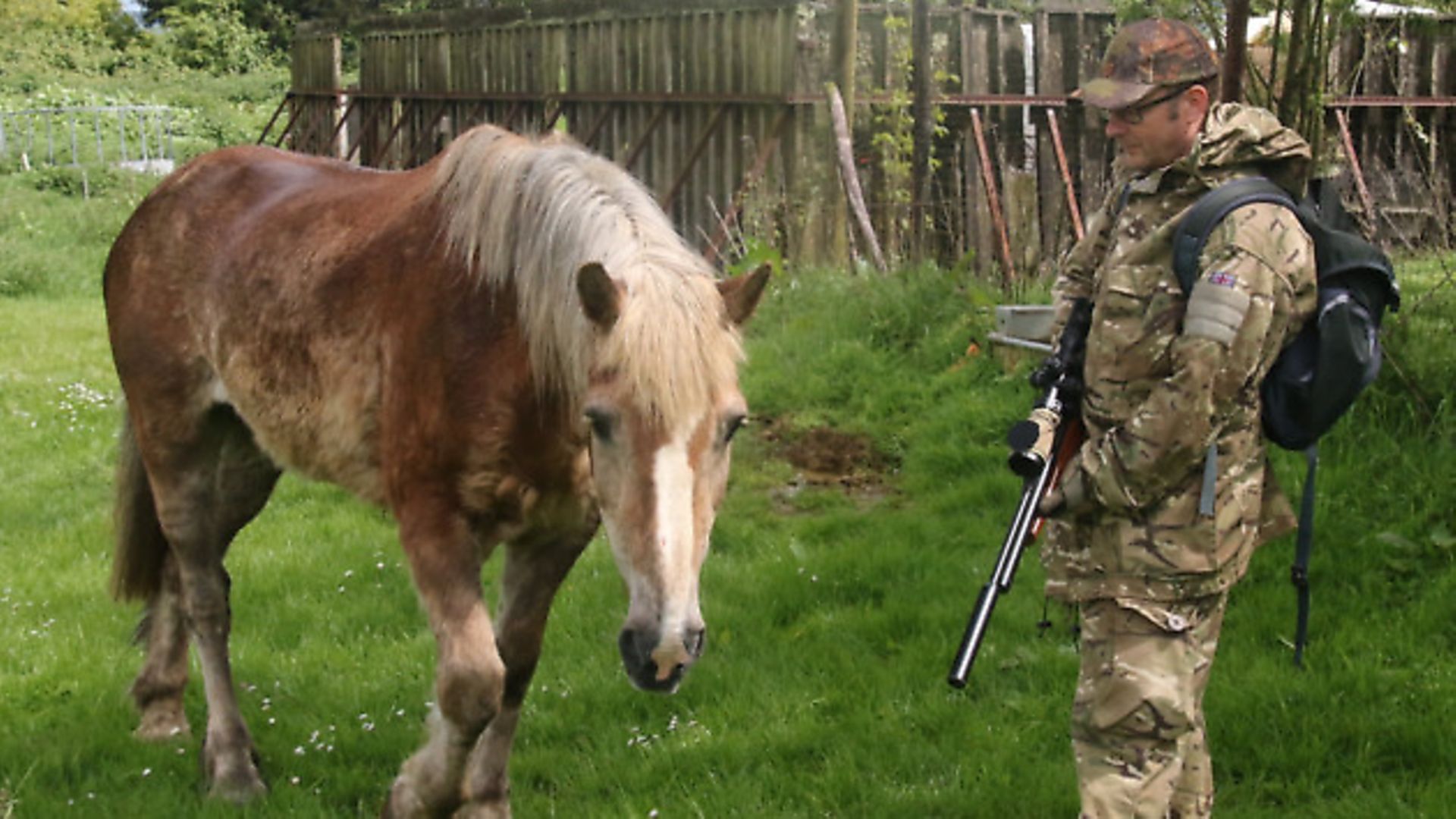 credit: Archant
credit: Archant
My last visit to Dorset coincided with what must have been the wettest weekend of the year, which severely dented my plans to get out and enjoy my new BSA Scorpion/Hawke Airmax combo. This time, the weather remained mostly dry for the couple of days I spent out on one of my permissions, so I wasn’t going to waste this opportunity.
I wanted to make the most of the relatively compact size of the BSA Scorpion by using it to hunt around the farm buildings. When I arrived at the yard, the first thing I did was to visit the farmhouse for cup of coffee and a chat with Bill, the farmer. As well as allowing me to gain some useful information about vermin on the farm, it enabled me to find out who was working and where they were.
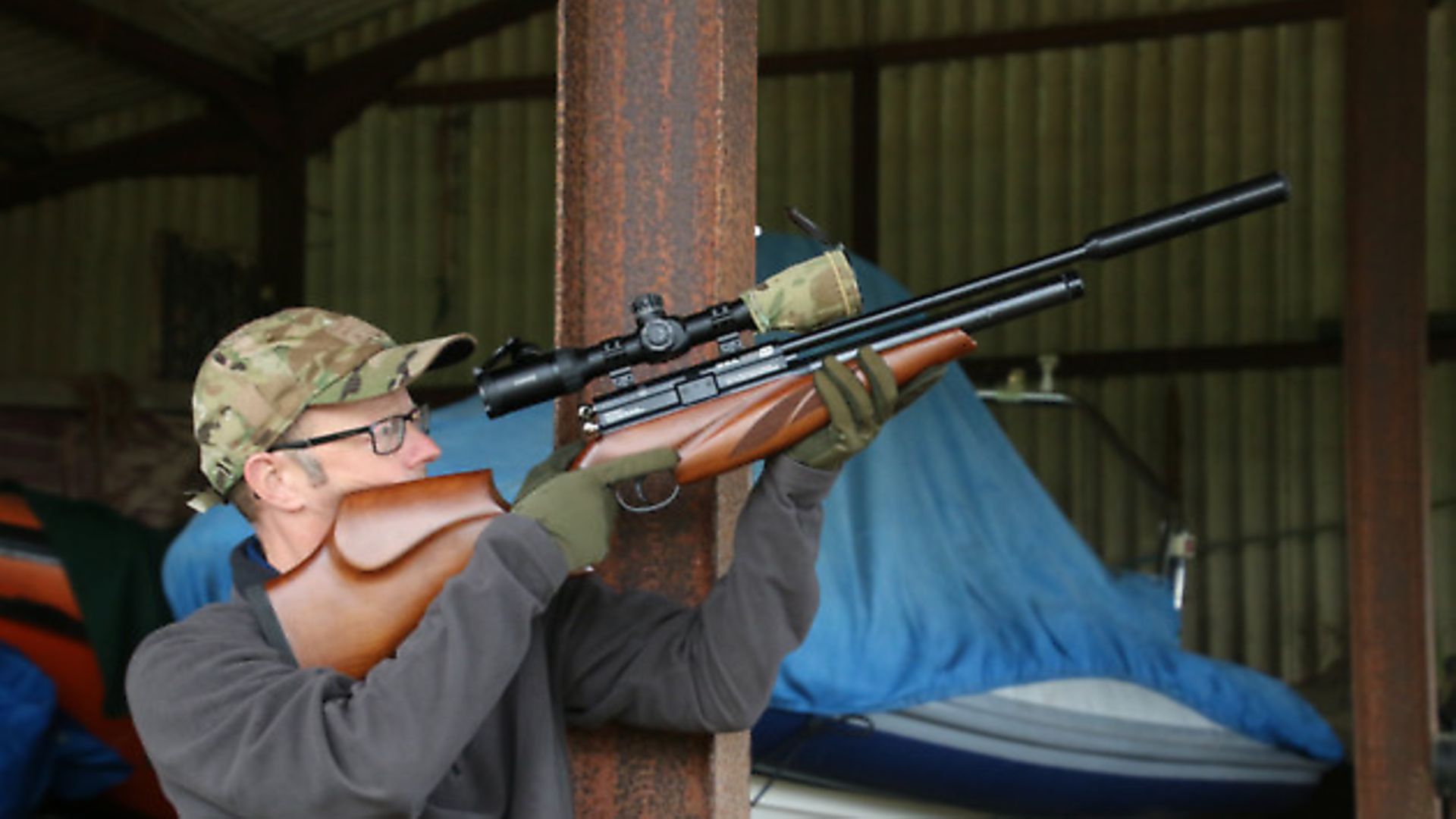 credit: Archant
credit: Archant
If there were any farmworkers or family members around the buildings where I wanted to shoot, then I would have to decide whether or not I would be able to plan my shooting safely around them. It’s not rocket science, but the safety of farmworkers and the farming business must always come before shooting activities.
With the kettle on and a packet of chocolate digestives open, it was good hour and a half before I left the farmhouse. Bill told me about the problems pigeons had been causing in his cattle shed, such as fouling the water and cattle feed with their droppings. I made it my priority for my vermin patrol. I didn’t bother putting on my full camouflage outfit as farmyard vermin are accustomed to humans, what with the constant presence of farmworkers and the noise of machinery.
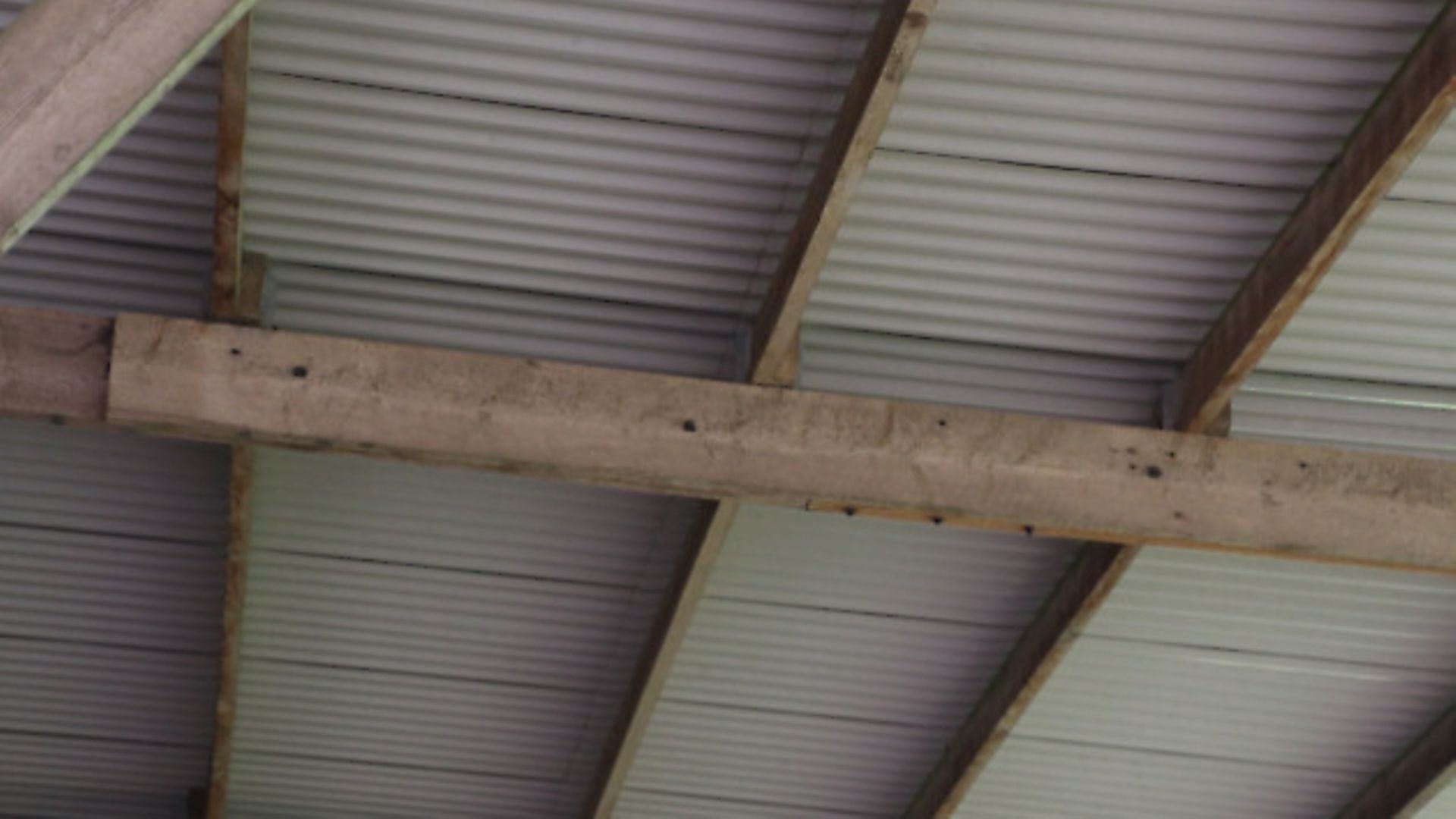 credit: Archant
credit: Archant
As I walked toward the cattle shed, I saw a pigeon fly into it, so I put a magazine into the Scorpion and checked the safety was on. The pigeon had settled on the rafters, partially obscured in the shadows, and as its head bobbed from left to right, I knew I had to consider the need for a safe backstop if I missed or the pellet passed straight through the pigeon’s body.
The rafters were made of timber, not the steel joists I had seen in some other farm buildings, and because of their fibrous nature, wood surfaces have the potential to bounce pellets back at the unwary shooter.
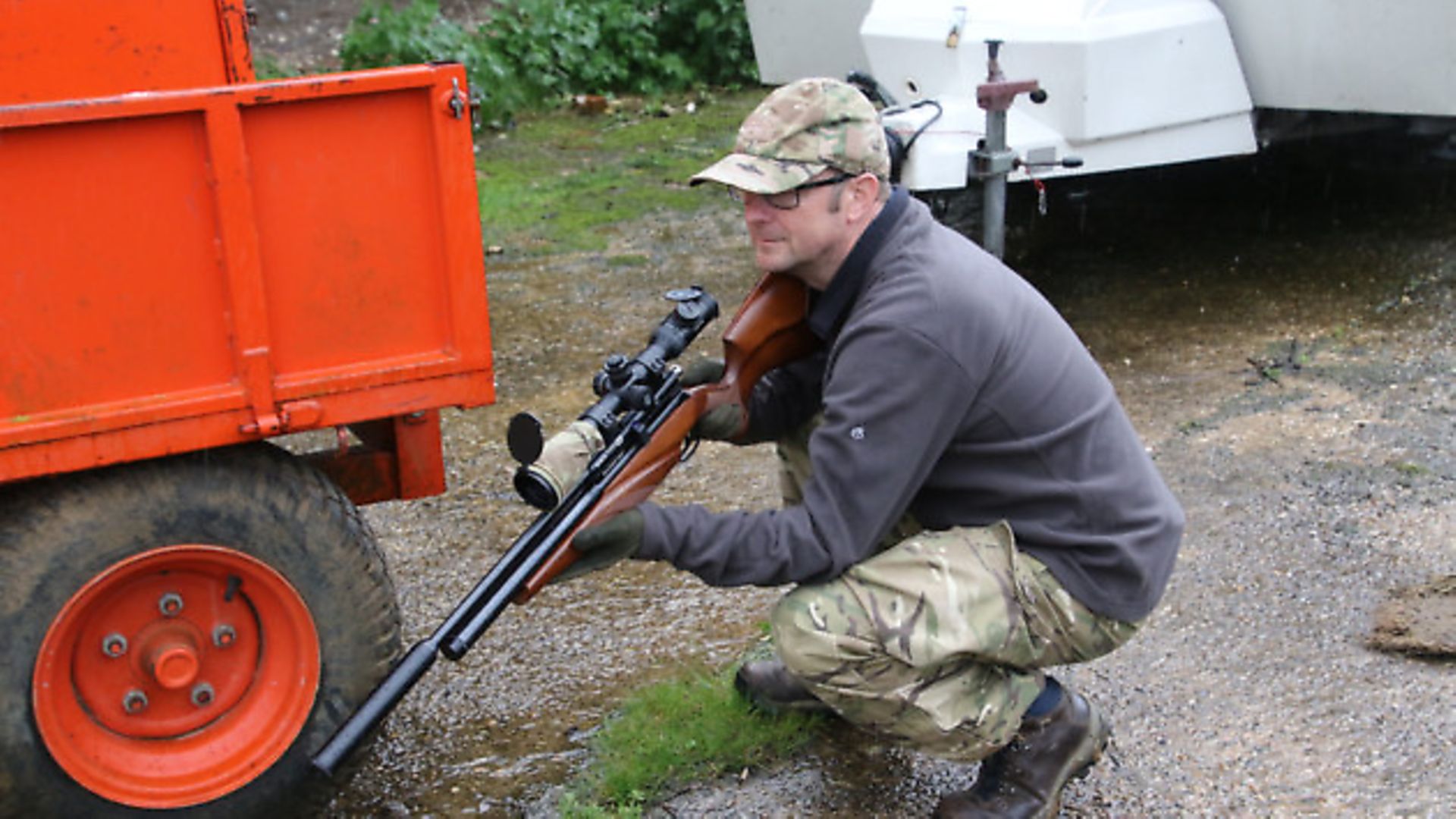 credit: Archant
credit: Archant
It has been advised that when shooting toward a roof, limit yourself to shots at targets either perched in front of steel joists or sitting with nothing but clear sky behind them. I can guarantee that you will quickly lose a hunting permission if you leave a trail of leaking roofs behind you. Later, when I explained to Bill why I couldn’t shoot pigeons in the cattle shed, he let me know that if I had put any holes in his shed roof he’d have told me to go away and never come back – although not with those exact words!
Once I’d decided not to shoot in the cattle shed, it was time to explore the other farm buildings. Unlike my Cambridgeshire permission, there was no shortage of cover. Parked tractors, piles of pallets and stacks of feed sacks all proved useful as I moved around the farmyard.
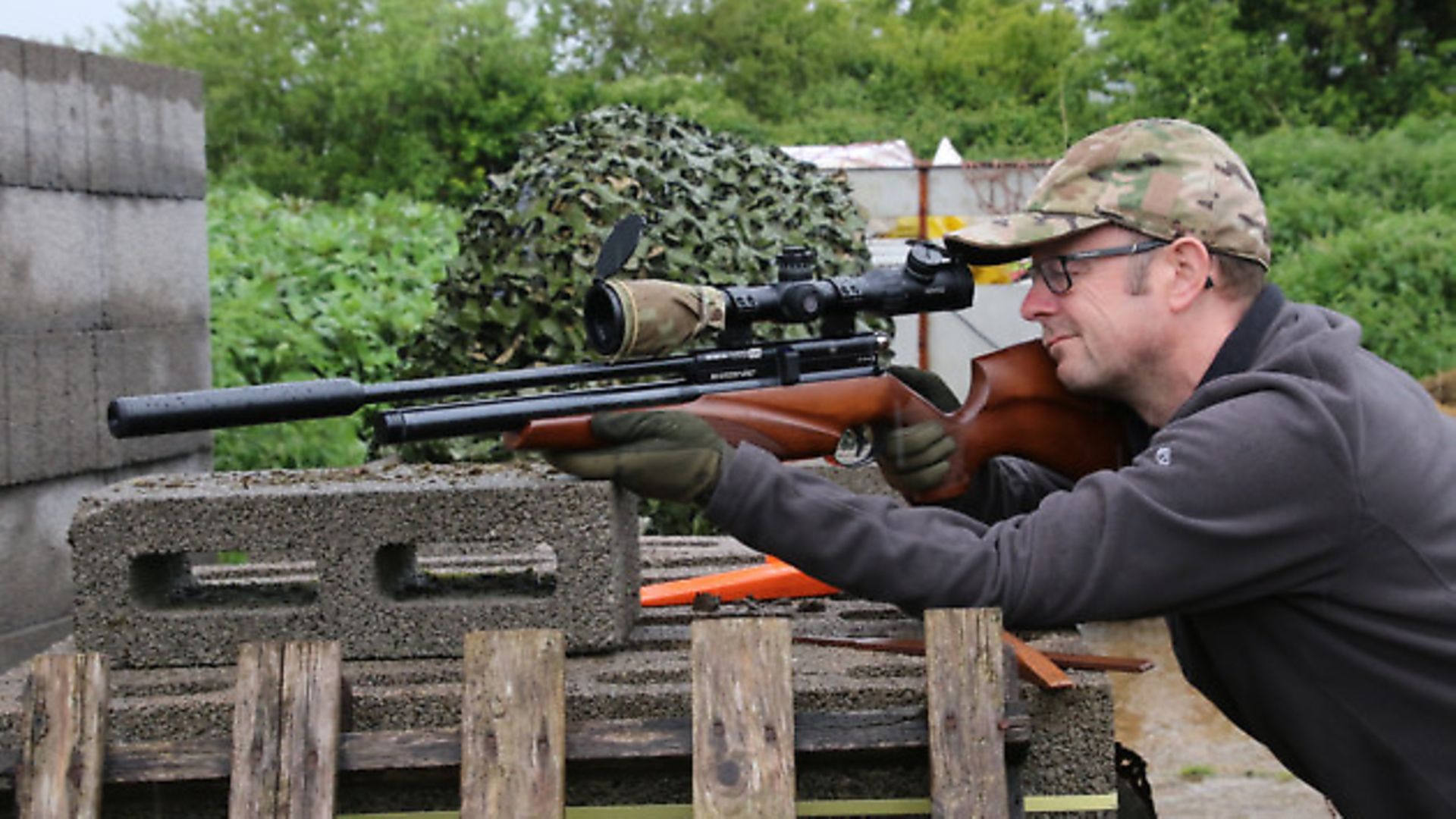 credit: Archant
credit: Archant
Whenever shooting in the vicinity of machinery or farm animals, the safest option is to keep close to them and shoot in the opposite direction. Keeping close to these potential hazards makes it a lot easier to ensure that any shots taken are away from them.
While sitting in one of the sheds looking for signs of any potential rat activity, I saw a pigeon land on a cattle trough and start to drink. Although Bill doesn’t begrudge pigeons a drink, they do have an unfortunate habit of defecating in the water, which spoils it for the cattle.
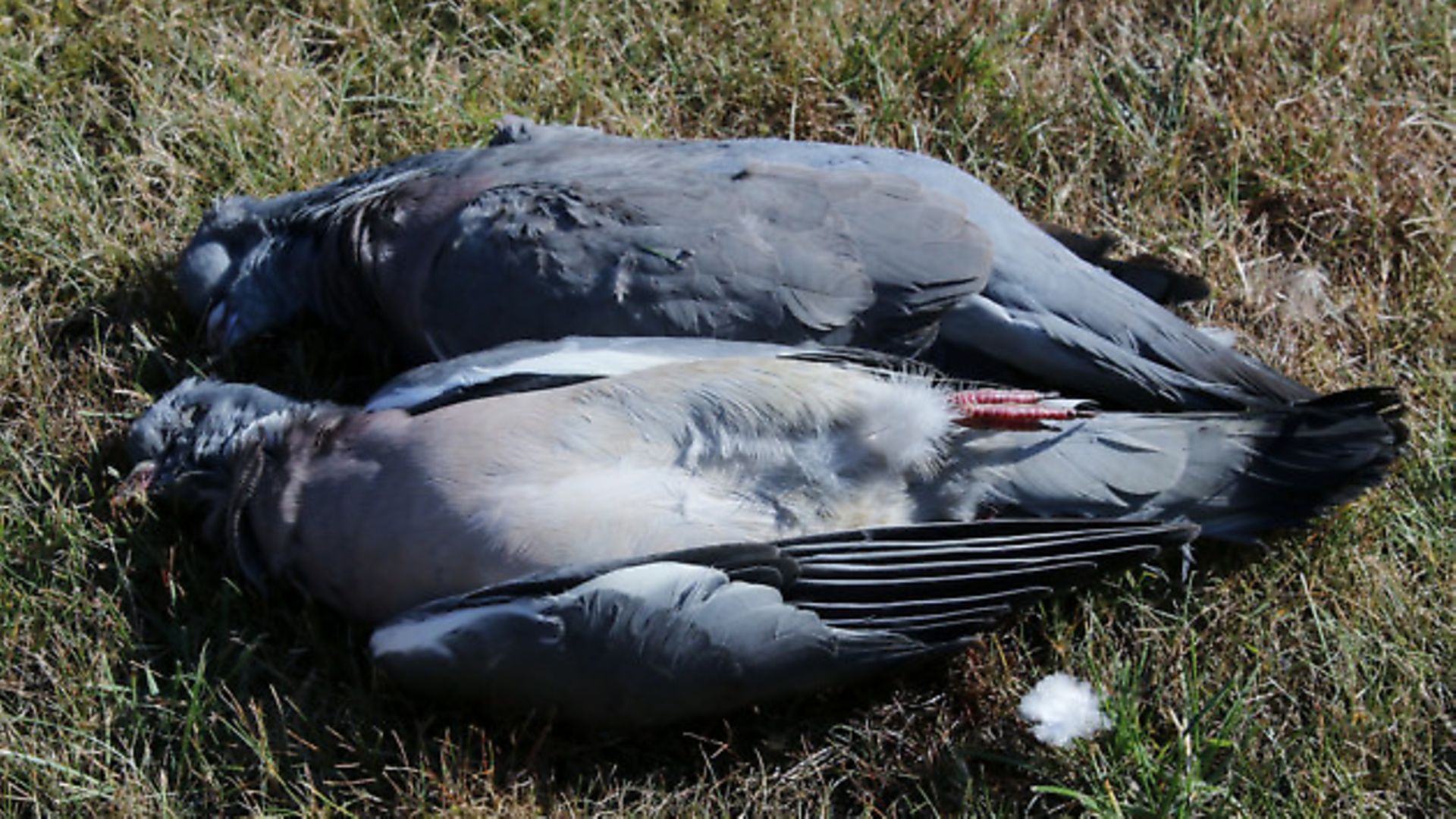 credit: Archant
credit: Archant
A short stealthy walk took me to nearby a pile of building material that provided cover and a useful rest to lean the Scorpion/Airmax combo on. I tried to settle the crosshairs on the pigeon’s bobbing head, which initially proved quite difficult, but eventually there did appear to be a rhythm to the way it moved.
I gently touched the trigger as the bird’s head rested in the crosshairs and a puff of feathers told me that an Air Arms pellet had done its job. I broke cover to retrieve my kill because the shot bird had landed on its back and I didn’t want a belly-up bird to scare any incoming pigeons away. This proved a good move because after about ten minutes, another pigeon landed on the water trough and was quickly despatched.
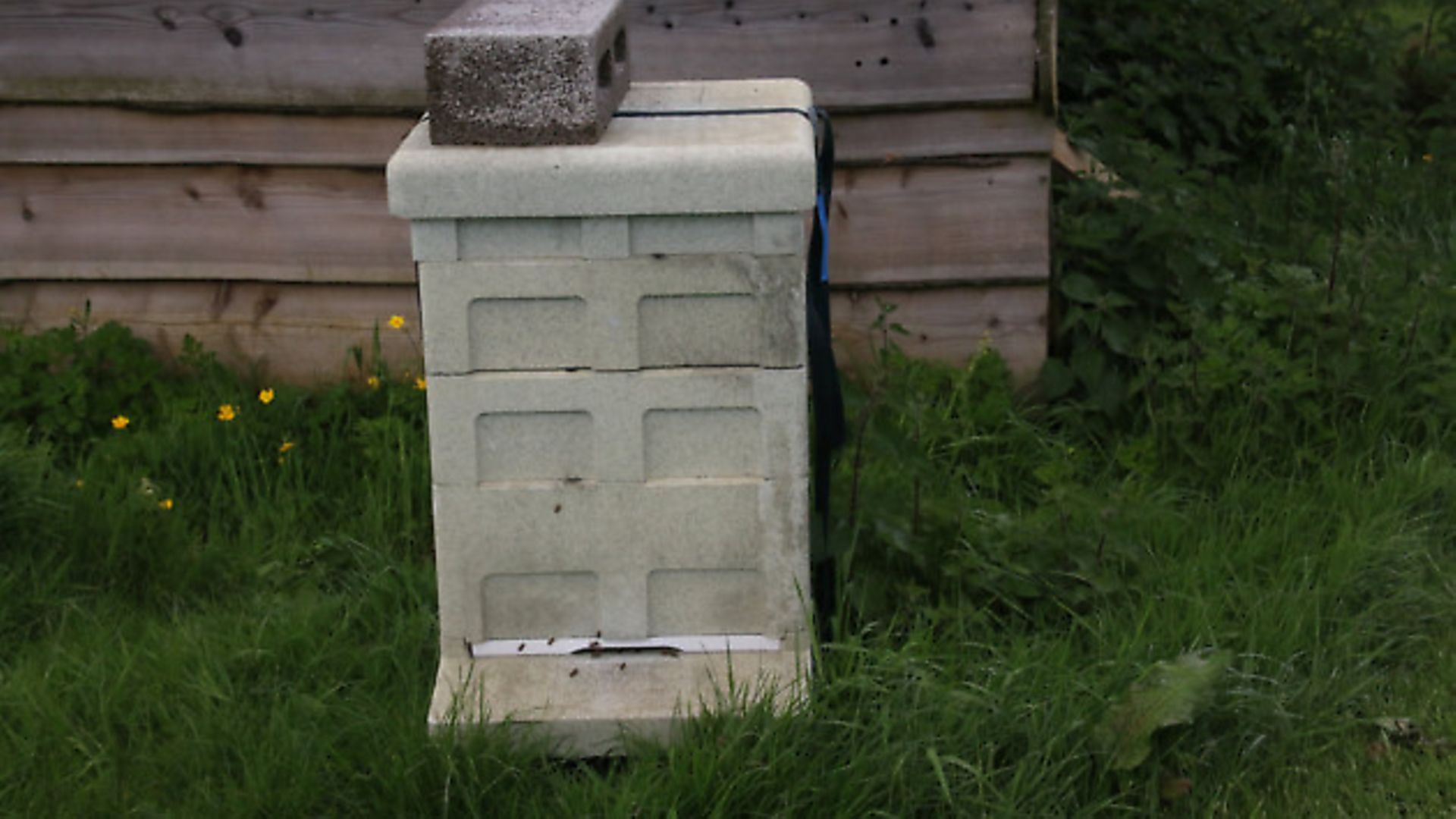 credit: Archant
credit: Archant
When I returned to the farmhouse to tell Bill I had finished shooting, he was very pleased to see I had made a start on controlling the pigeon numbers.
While talking with Bill, he took delivery of a number of new beehives. Now, I am glad I had the opportunity to see these new-style beehives as they are completely different to the traditional, white, wooden-slatted ones. I would advise anybody who sees one to avoid getting close. Bees contribute greatly to the rural economy, not just with the production of honey but by the pollination of millions of pounds’ worth of crops every year. More information about bees can be found on the website of the British Beekeepers Association.
___________________
More Hunting Journals:
Pigeon hunting in Arizona
Mick Garvey goes rat hunting
Squirrel season opener in Minnesota
Corvid chaos in Wales
Horses, bunnies and a Scorpion